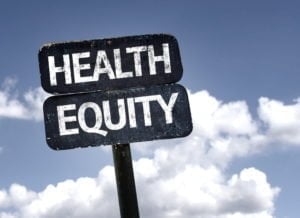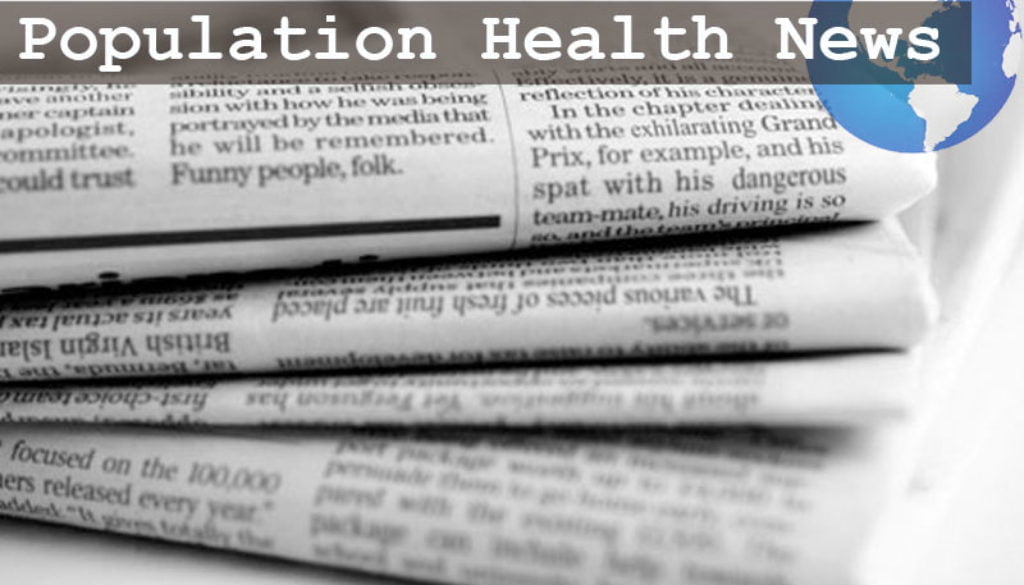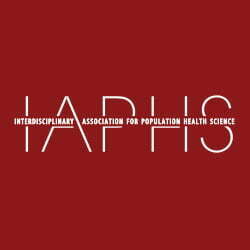Population Health News Roundup: January
IAPHS StaffEach month, we curate the top population health news. This month, virtual reality takes a role in injury prevention and breast feeding, hearing loss plays a role in other health risks, Washington State’s environmental health risks are mapped, indigenous teachings seek to reduce disparities, and much more.
Talking tech
Virtual injuries are better than real ones: By experiencing workplace hazards in virtual reality, University of Washington researchers hope that employees can learn to avoid accidents and injuries in real life. UW Department of Environmental & Occupational Health Sciences will soon incorporate virtual reality (VR) into worker health and safety training programs. The program began as a student-led capstone project in the Virtual Technology and Design Program at the University of Idaho. (University of Washington DEOHS Health & Safety Matters, November 7, 2018)
Helping nursing moms in virtual reality: Virtual reality immersion could help women relax and make breast feeding easier (STAT news, December 31, 2018)
An app that hears you breathe: Smartphone app monitors breathing to detect opioid overdoses, may be of use in operating rooms in the future. (Scientific American, January 11, 2019)
Global Health
 Tackling TB in the Canadian Arctic: Inuit populations in Canada’s Arctic region experience TB at 300 times that of non-indigenous Canadians. A plan is underway to treat and combat TB in culturally appropriate ways. (Radio Canada International, December 10, 2018)
Tackling TB in the Canadian Arctic: Inuit populations in Canada’s Arctic region experience TB at 300 times that of non-indigenous Canadians. A plan is underway to treat and combat TB in culturally appropriate ways. (Radio Canada International, December 10, 2018)
Removing the stigma of hemophilia in Kenya: People with hemophilia in Kenya are finally receiving treatment and support (John Hopkins Bloomberg School of Public Health’s Global Health Now, December 11, 2018)
High-risk drinking woes in South Africa: High rates of drinking in South Africa linked to sexually transmitted infections, fetal alcohol syndrome, and interpersonal violence (Boston University School of Public Health, January 4, 2019, citing Substance Abuse Treatment, Prevention, and Policy.)
Place
 High-end amenities bring high inequality: Being close to a city’s restaurants and arts venues can drive out people in lower incomes, worsening inequality (CityLab, December 13, 2018)
High-end amenities bring high inequality: Being close to a city’s restaurants and arts venues can drive out people in lower incomes, worsening inequality (CityLab, December 13, 2018)
Outside is good, but why?: A new University of Washington study “Nature for Health” looks at exactly how time in nature can improve health, and how the answers can be applied to programs and policies. (EarthLab and University of Washington News, October 2018)
Complete streets are sweet: San Antonio aims to make streets friendly to everyone–pedestrians, cars, and bicycles (but maybe not scooters) (KSAT TV, November 28, 2018)
Urban flooding rising but hidden, under-studied: Small urban flooding events are common, and a new nationwide assessment examines the challenges and harms, including secondary effects such as lost wages and lost hours due to rerouting. (CityLab, December 12, 2018)
Please come to Boston and live longer: Massachusetts life expectancy improves, while in other parts of the country, life expectancy trends downward (Boston Globe, with a quote from former IAPHS president Sandro Galea, December 28, 2018)
Environmental health disparities mapped: Tool developed by the University of Washington maps pollution and environmental inequalities via 19 measures such as pollution, socioeconomic status, and proximity to Superfund sites and toxic materials. (University of Washington DEOHS News, January 9, 2018)
Disparities
 Black women less depressed?: Fewer Black women than White women seemed to experience depression in this one-to-one matching study (Brain Science, November 2018)
Black women less depressed?: Fewer Black women than White women seemed to experience depression in this one-to-one matching study (Brain Science, November 2018)
Black lung is back: Miners, many younger than expected, are still being killed by black lung in Kentucky (The Guardian, December 13, 2018)
Depression expression in black and white: Black teenagers may show symptoms of depression differently, such as via interpersonal struggles or physical pain complaints. (Science Daily via Rutgers University, January 8, 2018)
Hearing loss linked to other health risks, increased health care costs: Dementia, depression, fall, and myocardial infarction risks are higher among people with hearing loss (NYT, December 31, 2018, and JAMA Otolaryngology-Head & Neck Surgery, November 8, 2018)
Programs & Policy
 Getting healthy the indigenous way: Canadian program seeks to help indigenous women feel comfortable in the gym and includes talk circles, culturally relevant food discussions, and beginner instructions (CBC, December 10, 2018)
Getting healthy the indigenous way: Canadian program seeks to help indigenous women feel comfortable in the gym and includes talk circles, culturally relevant food discussions, and beginner instructions (CBC, December 10, 2018)
Prisoners’ health struggles in New Mexico: No process, poor coordination, lack of information can harm prisoners entering the New Mexico prison system. (KUNM radio, University of New Mexico, December 20, 2018)
Collaborative care keeps nursing home at bay: Alzheimer’s and dementia care program reduced risk of nursing home admission for participants by 40%–and the program was cost-neutral (JAMA, December 21, 2018)
Helping the Osage tribal members eat, live better: Food Resource Equity and Sustainability for Health (FRESH) study includes a community gardening program and indigenous language and cultural teachings. Children work in the garden, learn stories about the crops, and paint the walls of the garden beds. (NIMHD, no date)
Reducing suicide risk for veterans: Survey suggests veterans favor gun locks, providers asking about gun access, more. (Michigan Medicine News Break, December 12, 2018)






All comments will be reviewed and posted if substantive and of general interest to IAPHS readers.